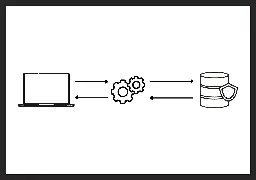Cows are usually very curious and nice. You have to remember that they are wild animals though and unpredictable. They could kill you by sitting on you.
If you act natural, don't make any sudden movements, than you're good. Also get out of the way, because they will just run over you. Especially in spring, when they get out of the barn for the first time since fall. They're blinded by the light and a little spring crazy.
Bulls are a different matter. You they're less sweet.
Stacks are for idiots, racks are what we need and blades are the real deal.
There has always been a margin for failure, but the margins need to change with climate change and that is something they're working on all the time. At least where i live.
Yes they do. At least they're working on it, like more and bigger basins, less waste and spilage, better throughput, etc.
This might be true, but it's rapidly changing due to a collaborative effort from big gaming companies, streaming services and hollywood. People are relearning the art of torrenting.
The second frame could also read "It sounds like a dying animal screaming in pain and agony"
Also, mobile idle games like clash of clans or simcity. Maybe some tactics like "I'll build this now so I can do that tomorrow" but that's not a puzzle, that is just choices.
Well.. it's saturday night and I ain't got anything better to do
Gameboys aren't edible, but with ketchup, you can at least lick off the ketchup
Come at me bro! Ketchup is good with everything. And I'm willing to die on this hill. Name me one thing that is not better with ketchup and I'll tell you you're wrong.
I think the cats, hedgehogs, squirels and otger frequent roadkill victims will be very happy if massively we start using flying electric cars
What's with the wasabi and soy mixing? I saw someone do that recently for the first time. He looked very confident at it and I assumed i had been doing it wrong all this time. Why is mixing a thing suddenly?
That does sound like something I would to participate in.
What is that place? I see it come by every once in a while, but I don't get it.
He needs to wear a little castle hat like this
Did it for the first time two years ago. It was for my parent's business website. I see nothing wrong with this method.
It worked for christianity, or any religion fir that matter. "You're a filthy heathen and you're not allowed the privileges of a normal human if you don't pretend to believe in my particular set of fairytales"
Ja, ik wil... stemmen! Mélanie en Bram stappen vandaag in het huwelijksbootje, maar gingen vanochtend eerst even stemmen in Oostdijk.

[Update: It seems to have been fixed now]
I teach a course in java and springboot for beginners. I would like to walk my students through the code of a real world java or springboot application. Can anyone recommend a good example?
In this letter, Dijkstra talks about readability and maintainability in a time where those topics were rarely talked about (1968). This letter was one of the main causes why modern programmers don't have to trouble themselves with goto statements. Older languages like Java and C# still have a (discouraged) goto statement, because they (mindlessly) copied it from C, which (mindlessly) copied it from Assembly, but more modern languages like Swift and Kotlin don't even have a goto statement anymore.
It could be weeks or even months before crew members can leave, due to complications beyond their control. Here’s why they’re still stuck – and how they’re coping.

Update: the ship has been towed now
https://lemm.ee/post/29785400
> So I'm making a project in SpringBoot with Oauth security. > > If I use Auth0 as my Authorization Server, I can register an application there and just say that I want user to be able to login with Google an Facebook. That's all it takes. > > If I use Keycloak as my Authorization Server, I can also have users choose Google or Facebook as there prefered login, but in order to provide that, I have to register my app with Google and Facebook first. > > So how come it's so easy with Auth0 and a little less easy with Keycloak? Is it a contract thing, does Auth0 have contracts with all these providers or something?
So I'm making a project in SpringBoot with Oauth security.
If I use Auth0 as my Authorization Server, I can register an application there and just say that I want user to be able to login with Google an Facebook. That's all it takes.
If I use Keycloak as my Authorization Server, I can also have users choose Google or Facebook as there prefered login, but in order to provide that, I have to register my app with Google and Facebook first.
So how come it's so easy with Auth0 and a little less easy with Keycloak? Is it a contract thing, does Auth0 have contracts with all these providers or something?
It’s something simple but makes the code much cleaner

I came across this post (and more like it) claiming extensions to be a good, or at least different, solution for mapping DTO's.
Are they though? Aren't DTO's supposed to be pure data objects? I've always been taught to seperate my mappings in special mapping services or mapping libraries like MapStruct and ModelMapper for implementing the good practice of "seperation of concerns".
So what about extensions?

YouTube Video
Click to view this content.
I get postman exports from students which I use to check their work. The authorisation of those requests now often contain hardcoded jwt tokens that are invalid by the time I get to checking them and I have to change every individual request with a global variable.
I do instruct my students to use variables, but there's always a couple who just don't, but that's a whole different issue.
Right now I'm using a regex find and replace to remove the Request authorization header in the json export file (which than defaults to 'inherit from parent'). This sort of works, but isn't ideal.
Do any of you know if postman offers an easier solution for this?
The world has always been going the shit and will continue to go to shit until the end of time. It takes mountains to influence the tides of nations. You should take the responsibilities you can bear, but no more.

The added image is a screenshot of how I see gifs in connect. There's supposed to be buttons in the bottom right corner, I've been told. But I can't see them. Do I need to add them in some setting somewhere?
I know how to implement basic oauth. My problem is that if I make a simple security filter like:
` @Bean
public SecurityFilterChain configure(HttpSecurity http) throws Exception { http .authorizeHttpRequests(authorize -> authorize .anyRequest().authenticated() ) .oauth2Login(withDefaults()); return http.build(); }`
Than I can adress @GetMappings in my browser and get prompted a oauth login screen and login there, but I can't adress a PostMapping or GetMapping in postman, because it doesn't redirect to a login screen (you get the html for the login screen as the ResponseBody in postman)
I can get a valid acces token from auth0 via 'https://{yourDomain}/oauth/token', but if I simply pass that jwt along as a "Bearer token" in postman, it doesn't work. It still shows me the login-screen-html in the response body.
It seems to me there's two things I can do:
- Make sure postman bypasses the login screen. I maybe don't really want to do that, since I want my backend and frontend to communicate their security through jwt. Or else I have to convince other people (from a different department) to change the way they implement frontend security, which is a pain for everyone. (If it needs to happen, it needs to happen though)
- Make sure the backend parses the jwt somehow. Maybe an extra Filter that checks the jwt's validity with the provider? I'm not sure how to tackle this.






